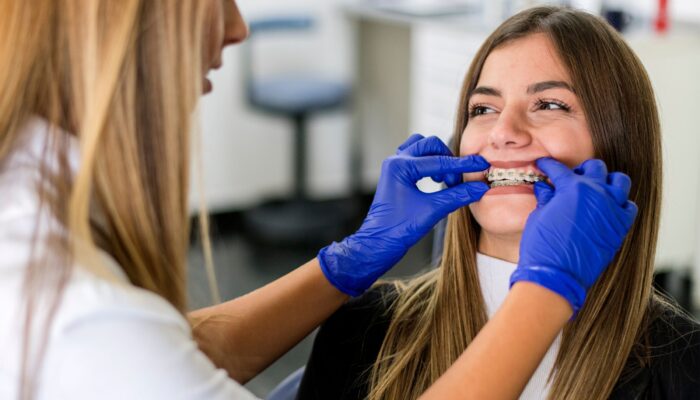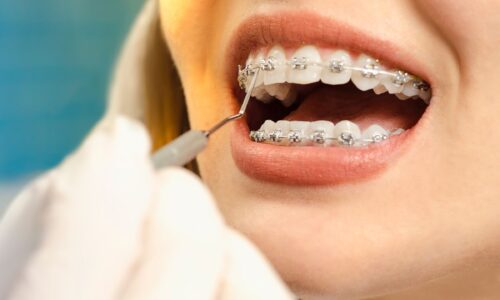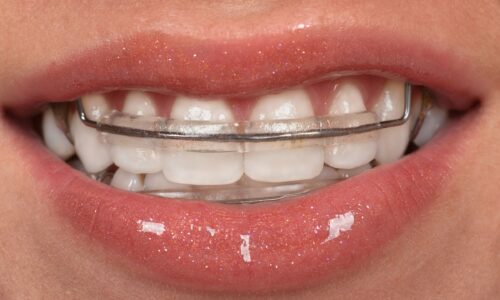Fixing moderate to severe malocclusions can positively impact your health. First, it reduces your risk of tooth decay and tooth damage. Malocclusions can make it difficult to brush and floss properly. They can also lead to uneven wear on the teeth, and this tooth erosion can exacerbate the rate of tooth decay. Fixing your teeth can also reduce the risk of temporomandibular jaw syndrome (TMJ), leading to grinding teeth, facial pain, and headaches.
Our approach to your orthodontic treatment depends on your mouth. You may need a spacer to increase the size of your upper jaw. We may need to remove teeth if crowding is an issue. Some patients may even require surgical procedures on their jaws. However, for most people, the fix to a malocclusion is usually some braces.
Traditional fixed multibracket braces are a time-tested orthodontics solution. We cement brackets to your teeth, connect them with wire, and adjust them to move your teeth into the proper position slowly. Once we get your teeth into the correct position, you use a removable device known as a retainer to help you keep them in the right spot.
However, there are other, less invasive options as well. We have removable clear plastic braces known as Invisalign. They are invisible, so they do not impact your ability to smile. Over time, you replace the clear aligners, slowly moving your teeth into the correct position.
We often associate orthodontics with tweens and teens. There is a reason for that. By that age, children are old enough to know how their teeth are forming and young enough that the bones in the jaw are still growing. That makes orthodontic treatment more accessible. However, malocclusion can occur at any age. They can impact facial symmetry, speech, and the ability to chew. You are never too old to get orthodontic work to improve your smile and quality of life. Plus, with newer methods, such as Invisalign, you get orthodontic work without anyone knowing.
Ready to improve the quality of your smile? Contact us to schedule an orthodontics consultation.


